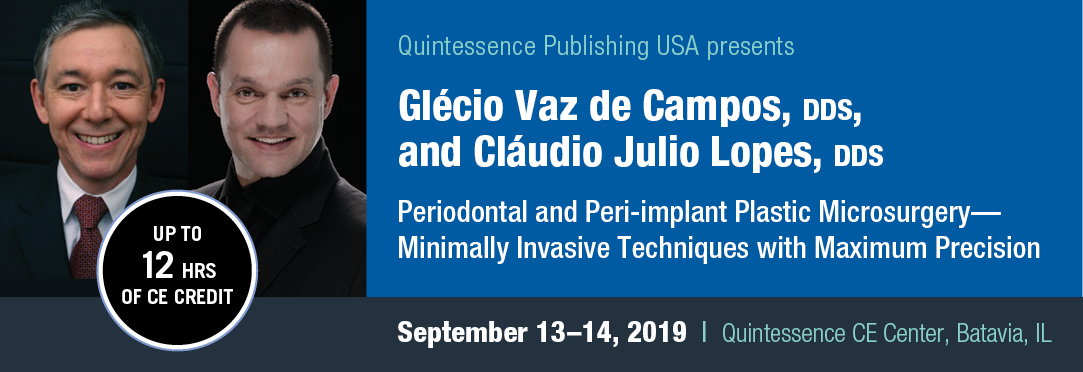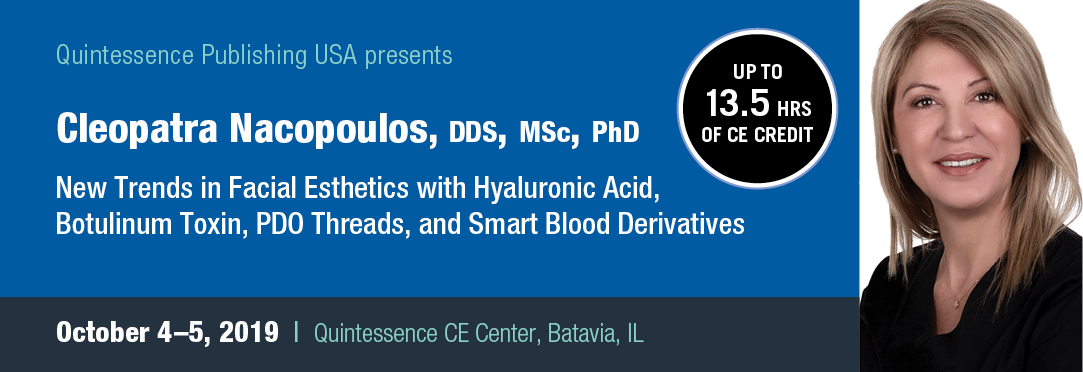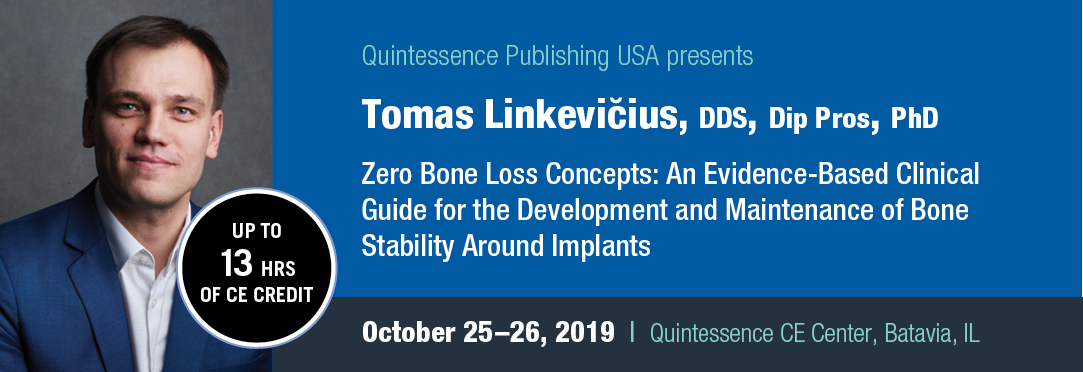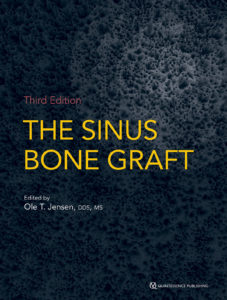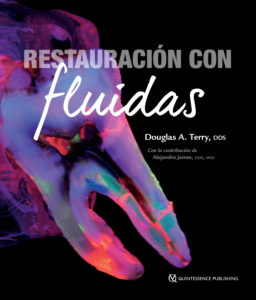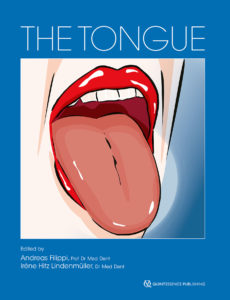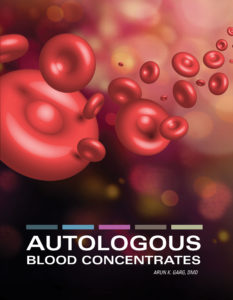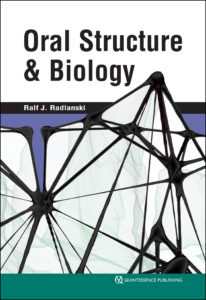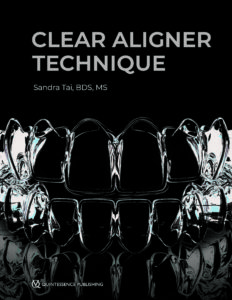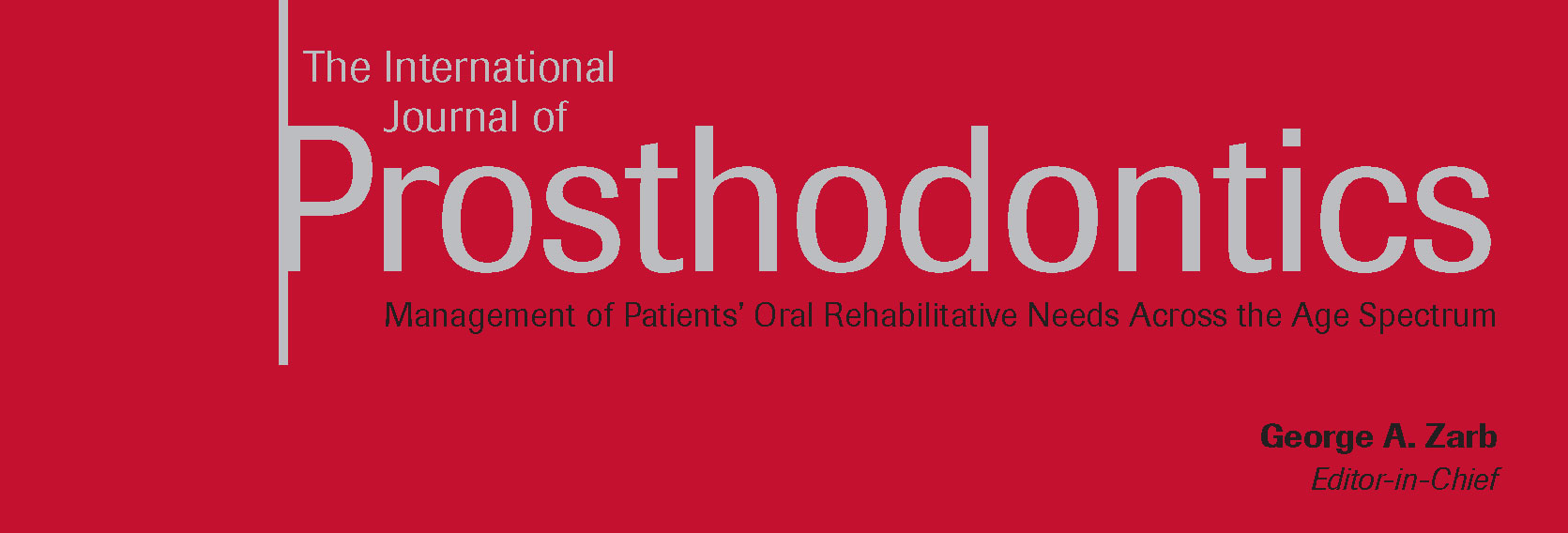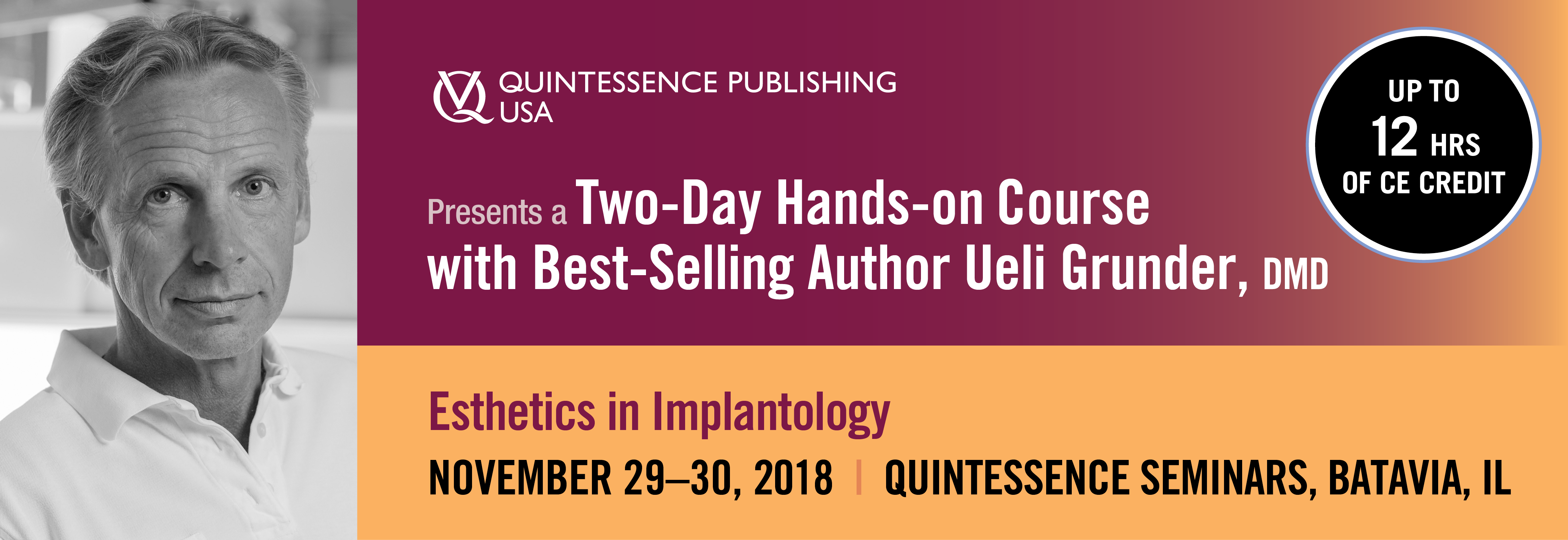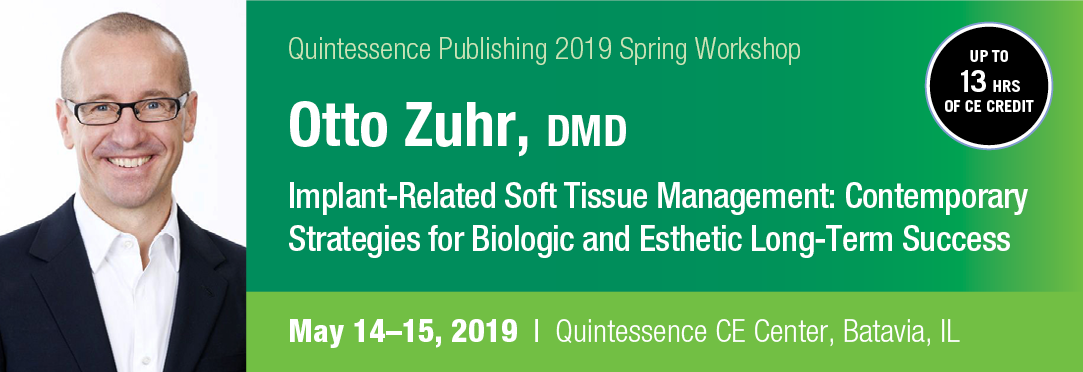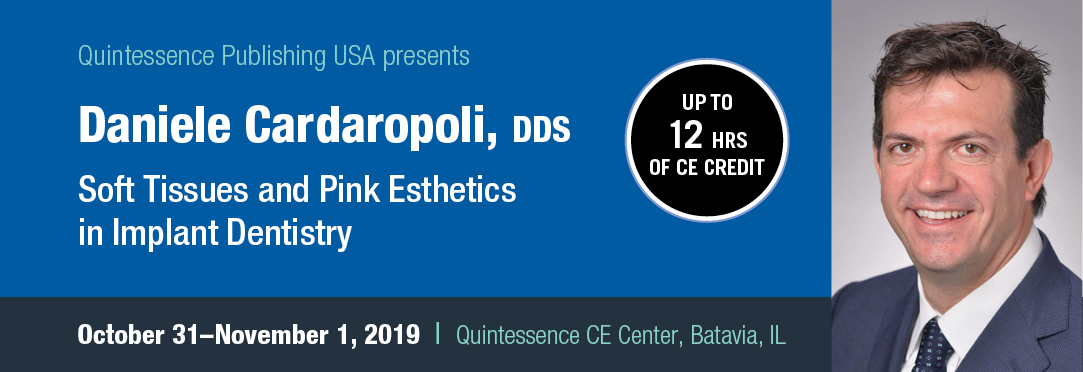November Monthly Special
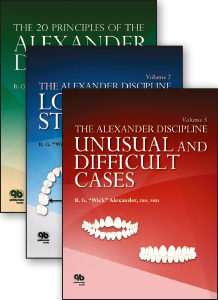 The Alexander Discipline Series
The Alexander Discipline Series
R. G. “Wick” Alexander
This three-volume series distills the author’s unique approach to orthodontic treatment into 20 principles that can be applied to deliver better treatment outcomes. Volume 1 outlines these principles, volume 2 introduces guidelines for approaching long-term stability with these principles, and volume 3 demonstrates how these principles can be used to achieve beautiful, functional, and stable results even in patients requiring creative treatment planning and treatment mechanics. This series will give orthodontists the confidence and relevant knowledge to formulate individualized treatment plans for their patients.
Volume 1—The 20 Principles of the Alexander Discipline
232 pp; 1,000 illus; ©2008; ISBN 978-0-86715-467-2 (B4672); $138
Volume 2—Long-Term Stability
204 pp; 1,000 illus; ©2011; ISBN 978-0-86715-468-9 (B4689); $152
Volume 3—Unusual and Difficult Cases
192 pp; 1,030 illus; ©2016; ISBN 978-0-86715-469-6 (B4696); $176
Three-volume set: $466 Save 25% this month only and get the full set for just $350!
New Titles in Books
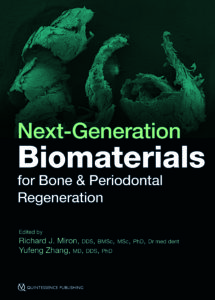 Next-Generation Biomaterials for Bone & Periodontal Regeneration
Next-Generation Biomaterials for Bone & Periodontal Regeneration
Edited by Richard J. Miron and Yufeng Zhang
New and innovative biomaterials are being discovered or created in laboratories at an unprecedented rate, but many of them remain entirely foreign to practicing clinicians. This book addresses this gap in knowledge by summarizing some of the groundbreaking research performed to date on this topic and providing case examples of these biomaterials at work. The book begins with a review of the biologic background and applications of bone grafting materials utilized in dentistry. The principles of guided tissue and bone regeneration are covered in detail, including many recent advancements in barrier membrane technologies as well as use of platelet-rich fibrin and various growth factors, and many next-generation materials that will optimize future bone and periodontal regeneration are presented. The final chapter is designed to help clinicians select appropriate biomaterials for each specific regenerative protocol. Much like one implant size and shape cannot be utilized for every indication in implant dentistry, one bone grafting material, barrier membrane, or growth factor cannot maximize regenerative outcomes in all clinical situations. This textbook teaches clinicians how to utilize biomaterials in an appropriate, predictable, and evidence-based manner.
384 pp; 960 illus; ©2019; ISBN 978-0-86715-796-3 (B7963); $218 Special preorder price! $174
Available January 2019
The Sinus Bone Graft, Third Edition
Edited by Ole T. Jensen
As research proceeds on treatment of the resorbed posterior maxilla, new techniques and innovations continue to be adopted to solve this clinical problem. While the previous edition of this book provided detailed information on the types of grafting materials and procedures available at the time, this completely revised version looks to the future with new strategies for treatment, some of which avoid grafting altogether. This book not only reviews the time-tested lateral window approach for sinus elevation and grafting but also describes a variety of techniques to approach the sinus transcrestally with or without grafting material. One section of the book is devoted entirely to the different types of implants and implant placement techniques available, many of which are designed specifically to avoid sinus elevation. In addition to clinical case studies and descriptions of how to perform specific surgical procedures, this book includes discussions on the science of bone formation and how continued research brings us closer every day to the ultimate goal of using tissue engineering to completely regenerate new teeth.
288 pp; 948 illus; ©2019; ISBN 978-0-86715-791-8 (B7918); $168 Special preorder price! $134
Available January 2019
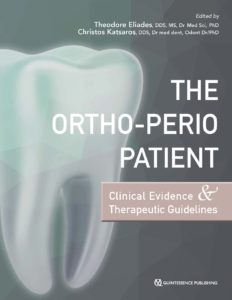 The Ortho-Perio Patient: Clinical Evidence & Therapeutic Guidelines
The Ortho-Perio Patient: Clinical Evidence & Therapeutic Guidelines
Edited by Theodore Eliades and Christos Katsaros
Although most orthodontic curricula provide courses on interdisciplinary orthodontic-periodontic treatment, there are still surprisingly few resources on the topic. Written by leading scholars in the field, this book provides a broad analysis of the topic from both the periodontal and orthodontic perspectives. The authors systematically analyze the scientific and clinical interactions of these specialties by reviewing all the available evidence and using case studies to demonstrate principles discussed in theory. The result is a text that outlines the treatment fundamentals and shows how to improve the therapeutic outcomes involving orthodontic-periodontic interventions.
224 pp; 346 illus; ©2019; ISBN 978-0-86715-679-9 (B6799);$128 Special preorder price! $102
Available January 2019
Douglas A. Terry
Este libro contiene las distintas aplicaciones de los compuestos de resina fluidos de nueva generación y las presenta paso a paso. Los primeros capítulos tratan sobre su evolución y la ciencia que respalda el concepto de su diseño adhesivo y la técnica compuesta de resina inyectable. Los capítulos siguientes presentan casos en los que se recurre a su uso clínico, como restauraciones anteriores y posteriores, coronas pediátricas, adhesiones de restauraciones indirectas, desarrollo del sitio de póntico ovoide, eliminación de la sensibilidad en el cervical del diente, sellado inmediato de la dentina, reparación de dentadura fracturada, entre otros. Cada presentación de caso incluye los varios diseños de adhesivos preparativos, técnicas reconstituyentes, protocolos adhesivos y los procedimientos finales correspondientes. Con el uso de este material ampliará las opciones de tratamiento dental, la precisión y la predictibilidad, reduciendo el tiempo del paciente en su consultorio.
292 pp; 914 illus; ©2019; 978-0-86715-775-8 (E7758); $118 Special preorder price! $94
Available January 2019
Read more about Restauración con fluidas here!
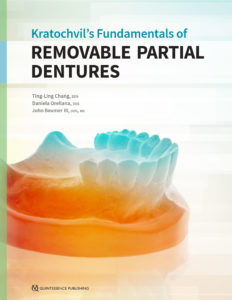 Kratochvil’s Fundamentals of Removable Partial Dentures
Kratochvil’s Fundamentals of Removable Partial Dentures
Ting-Ling Chang, Daniela Orellana, and John Beumer III
In the 1960s, Professor F. J. Kratochvil recognized the importance of biomechanics in removable partial denture (RPD) design and used these principles to develop a new design philosophy. This “RPI system”—a clasp assembly consisting of a rest, a proximal plate, and an I-bar retainer—changed how clinicians approach partial denture design and is now used throughout the world. This textbook provides an overview of Kratochvil’s design philosophy and the basic principles of biomechanics it is based upon. Topics include components of RPDs and their functions, design sequences for maxillary and mandibular RPDs, and techniques for surveying and determining the most advantageous treatment position. A chapter dedicated to digital design and manufacturing of RPD frameworks highlights new technology in this emerging field. Additional topics include optimizing esthetic outcomes through attachments and rotational path RPDs as well as applying the RPI system to patients with maxillofacial defects. The authors provide illustrations of clinical cases throughout the book as well as an illustrated glossary of prosthodontic terminology. This textbook will prepare students and general practitioners to design and fabricate a biomechanically sound RPD framework for just about any dental configuration they encounter.
240 pp; 748 illus; ©2019; ISBN 978-0-86715-790-1 (B7901); Now available! $108
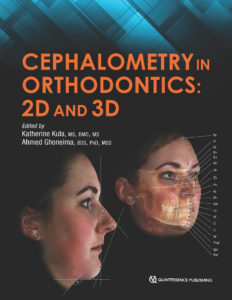 Cephalometry in Orthodontics: 2D and 3D
Cephalometry in Orthodontics: 2D and 3D
Edited by Katherine Kula and Ahmed Ghoneima
Cephalometrics has been used for decades to diagnose orthodontic problems and evaluate treatment. However, the shift from 2D to 3D radiography has left some orthodontists unsure about how to use this method effectively. This book defines and depicts all cephalometric landmarks on a skull or spine in both 2D and 3D and then identifies them on radiographs. Each major cephalometric analysis is described in detail, and the linear or angular measures are shown pictorially for better understanding. Because many orthodontists pick specific measures from various cephalometric analyses to formulate their own analysis, these measures are organized relative to the skeletal or dental structure and then compared or contrasted relative to diagnosis, growth, and treatment. Cephalometric norms (eg, age, sex, ethnicity) are also discussed relative to treatment and esthetics. The final chapter shows the application of these measures to clinical cases to teach clinicians and students how to use them effectively. As radiology transitions from 2D to 3D, it is important to evaluate the efficacy and cost-effectiveness of each in diagnosis and treatment, and this book outlines all of the relevant concerns for daily practice.
208 pp; 338 illus; ©2018; ISBN 978-0-86715-762-8 (B7628); Now available! $118
Read more about Cephalometry in Orthodontics: 2D and 3D here!
Edited by Andreas Filippi and Irène Hitz Lindenmüller
As the largest organ in the oral cavity, the tongue not only plays a primary role in masticatory and speech function—it is also a significant indicator of health, demonstrating signs of both oral pathologies and diseases that can affect the entire body. Because no health care provider gets the opportunity to examine a patient’s tongue as often as the dentist, it is essential for dentists to recognize when there may be a problem with the tongue and what the problem is. In addition to an overview of tongue anatomy and general diagnosis and treatment recommendations, this book contains an atlas of more than 50 specific diseases and health concerns that may present signs and symptoms in the tongue. Each is outlined in a quick-reference table describing etiology, prognosis, and more and is accompanied by photographs of different ways the condition can present. A true diagnostic aid, this guide will allow clinicians to identify and address any abnormality a patient’s tongue may exhibit.
216 pp; 591 illus; ©2019; ISBN 978-0-86715-776-5 (B7765); Now available! $148
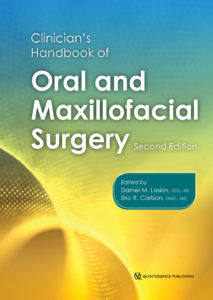 Clinician’s Handbook of Oral and Maxillofacial Surgery, Second Edition
Clinician’s Handbook of Oral and Maxillofacial Surgery, Second Edition
Edited by Daniel M. Laskin and Eric R. Carlson
There are frequent situations in which oral and maxillofacial surgeons find themselves in need of an immediate answer to a clinical problem. However, this can involve a time-consuming search for the appropriate reference source. This book continues the format of the previous edition by providing a single place to quickly find information on a diverse range of clinical topics, including dentoalveolar surgery, maxillofacial trauma, craniofacial anomalies, and oral pathology. All of the previous chapters have been updated, and new chapters on implantology, cleft lip and palate, maxillofacial reconstruction, oral squamous cell carcinoma, and cosmetic surgery have been added. Moreover, increasing the size of the book has allowed for the inclusion of many summary charts, tables, clinical photographs, and radiographs, which was not possible in the previous version. As a result, this new edition provides expanded information in an improved format.
Although this book is designed as a quick reference source, familiarizing oneself with its content in advance will both add to the reader’s general knowledge base and improve the ability to find information quickly in urgent situations. Residents in oral and maxillofacial surgery should find its content particularly useful during their clinical training, and the concise organization of the material should also be helpful to them in retaining information when subsequently preparing for the American Board of Oral and Maxillofacial Surgery.
624 pp (softcover); 374 illus; ©2019; ISBN 978-0-86715-730-7 (B7307); Now available! $168
Read more about the Clinician’s Handbook of Oral and Maxillofacial Surgery, Second Edition here!
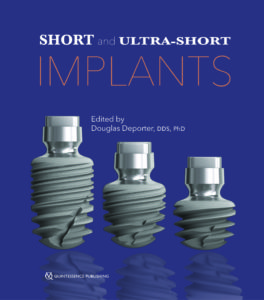 Short and Ultra-Short Implants
Short and Ultra-Short Implants
Edited by Douglas Deporter
Research has shown that short implants are not only a viable option but oftentimes a superior one that carries fewer risks for the patient and dentist, especially in resorbed jaw sites. As clinical trials continue to underscore the safety and efficacy of short implants, more dentists are considering their use with real interest, and this book provides the information clinicians need to incorporate short implants into their own practice. The book reviews the clinical effectiveness of short implants and then describes treatment protocols for the various types of short implants and their placement in different areas of the mouth. Case presentations demonstrate the recommended techniques and showcase the results.
168 pp; 334 illus; ©2018; ISBN 978-0-86715-785-7 (B7857); Now available! $85
Read more about Short and Ultra-Short Implants here!
The Time for Short Is Now: Today’s Short Implants and Why You Should Give Them a Chance
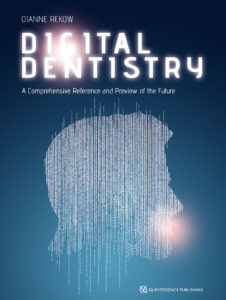 Digital Dentistry: A Comprehensive Reference and Preview of the Future
Digital Dentistry: A Comprehensive Reference and Preview of the Future
Dianne Rekow
This comprehensive reference book aims to describe and demystify the underlying principles of digital technologies. Contributions from authors with differing expertise emphasize the influence of digital technologies across a breadth of disciplines and review how we can acquire, manipulate, and leverage digital data within those disciplines. Also examined are the similarities and differences between available and emerging systems, the value and use of digital approaches to clinical cases, and the challenges and opportunities intrinsic to both integrating new technologies into dental practice and keeping up with rapid changes. Previewing the future, this resource explores the potential impact of new innovations on how and what we practice, as well as how we think, teach, and pursue knowledge. Energizing our ingenuity and imagination, this book lays the groundwork for dentistry’s vibrant and exciting future.
400 pp; 447 illus; ©2018; ISBN 978-1-78698-023-6 (BL081); $218
Arun K. Garg
Since the discovery of platelet-rich plasma (PRP) 25 years ago, interest in the use of autologous blood concentrates as adjuncts to surgical treatment has exploded. As more and more medically useful components of autologous blood concentrates have been identified, a host of unique acronyms such as PRF, CGF, PRGF, and more have surfaced, resulting in significant confusion among clinicians as to which material to use and when. Written by one of the original co-discoverers of PRP, this book tackles this issue of “too much information” by illuminating the science behind the clinical use of autologous blood concentrates as adjuncts to surgical treatment and helps to establish a foundation of practical knowledge for clinical use. The first part of the book summarizes the current literature from all aspects of medicine currently using autologous blood concentrates, showing both the possible applications as well as the limitations of these biologic materials. The second part of the book provides step-by-step instructions and richly illustrated treatment protocols for a number of applications for autologous blood concentrates specific to the practice of implantology and oral and maxillofacial surgery. Comprehensively researched and expertly written, this book is a must for clinicians who are just beginning to incorporate autologous blood concentrate treatment into their practice as well as experienced practitioners.
224 pp; 398 illus; ©2018; ISBN 978-0-99918-832-3 (B0007); $199
Read more about Autologous Blood Concentrates here!
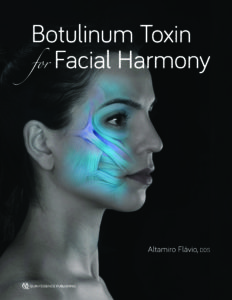 Botulinum Toxin for Facial Harmony
Botulinum Toxin for Facial Harmony
Altamiro Flávio
The mastery of dentistry brings esthetic knowledge of the face that is applicable to more than just the teeth. In the process of performing a complete facial analysis, the practitioner can identify asymmetries and concerns localized to an area—such as the forehead, eyebrows, nose, or lower face—and offer Botox therapy to increase facial harmony. This book outlines the many clinical uses for Botox, with detailed illustrations and case presentations to support each procedure. The first part of the book covers systematic facial analysis, photographic documentation, and how to plan treatment. Special attention is paid to the anatomy and physiology of the face and the identification of injection points. Detailed treatment instructions for dosage, syringe type, and needle size are included for each procedure, as well as guidelines on how to evaluate results anthropometrically to determine whether esthetic treatment goals have been met. This stunning book will change the way you approach facial analysis and widen your esthetic treatment options for patients.
160 pp; 359 illus; ©2018; ISBN 978-0-86715-787-1 (B7871); $148
Read more about Botulinum Toxin for Facial Harmony here!
Botulinum Toxin for Facial Harmony: How this Unconventional Treatment Can Expand Your Practice
Ralf J. Radlanski
Knowledge of the structures of the orofacial region from the macroscopic scale to the molecular level and pathologic changes to those structures enables practitioners to successfully treat patients or seek treatment options. This book presents the structural biologic foundations underpinning dental and oral medicine. Beginning with an overview of the anatomy of the mouth and moving on to the evolution of the oral structures and pre- and postnatal development of the oral cavity, related facial structures, and the teeth, this book describes each part of the orofacial region in terms of its morphology, tissue structure, cellular properties, and development. Functioning as both a textbook for dental students and a reference manual for experienced clinicians, this compendium of the structural biologic foundations of clinical work in dental and oral medicine allows practitioners to integrate current research in molecular biology into a solid framework of knowledge.
472 pp (softcover); 245 illus; ©2018; ISBN 978-0-86715-746-8 (B7468); $168
Sandra Tai
Clear aligners are the future of orthodontics, but digital orthodontics evolves so rapidly that it is hard to keep pace. This book approaches clear aligner treatment from a diagnosis and treatment-planning perspective, discussing time-tested orthodontic principles like biomechanics and anchorage and demonstrating how to apply them to orthodontic cases using these appliances. Each chapter explains how to use clear aligners to treat a given malocclusion and teaches clinicians how to program a suitable treatment plan using available software, how to design the digital tooth movements to match the treatment goals, and finally how execute the treatment clinically and finish the case well. This clinical handbook will prepare orthodontists and dental students to exceed patient expectations with the most esthetic orthodontic appliance currently available.
320 pp; 1,344 illus; ©2018; ISBN 978-0-86715-777-2 (B7772); $218
Read more about Clear Aligner Technique here!
Clear Aligner Technique: Bringing Orthodontic Treatment into the Digital Era
Current Issues in Journals
Featured article: Interproximal Tunneling with a Customized Connective Tissue Graft: A Microsurgical Technique for Interdental Papilla Reconstruction
Damien Feuillet, Jean-François Keller, and Kevimy Agossa
Root Resection and Hemisection Revisited. Part II: A Retrospective Analysis of 195 Treated Patients with Up to 40 Years of Follow-up
Jean-Marie Megarbane, Abdel Rahman Kassir, Nadim Mokbel, and Nada Naaman
The “Scalloped Guide”: A Proof-of-Concept Technique for a Digitally Streamlined, Pink-Free Full-Arch Implant Protocol
Maurice A. Salama, Alessandro Pozzi, Wendy Auclair Clark, Marko Tadros, Lars Hansson, and Pinhas Adar
Passivity of Fit of a Novel Prefabricated Implant-Supported Mandibular Full-Arch Reconstruction: A Comparative In Vitro Study
Matthias Karl, Roberto Carretta, and Kenji W. Higuchi
Clinical Fit of Monolithic Zirconia Single Crowns
Stefanie Anke Rau, Michael Raedel, Aikaterini Mikeli, Martina Raedel, and Michael H. Walter
Thematic abstract review: Use of Oral Implants for Cancer Reconstruction: The Role of the Approach to Vascular Flaps in Implant Outcomes
Martin Osswald
A Novel Experimental Dental Implant Permits Quantitative Grading of Surface-Property Effects on Osseointegration
Ernst B. Hunziker, Michael Spiegl-Habegger, Stefanie Rudolf, Yuelian Liu, Zhiyuan Gu, Kurt Lippuner, Nahoko Shintani, and Lukas Enggist
Systematic Review and Meta-Analysis of Hard Tissue Outcomes of Alveolar Ridge Preservation
Seyed Hossein Bassir, Muhanad Alhareky, Buddhathida Wangsrimongkol, Yinan Jia, MS, and Nadeem Karimbux
Prevalence of the Signs and Symptoms of Temporomandibular Disorders Among Spanish Adults and Seniors According to Five National Surveys Performed Between 1993 and 2015
Javier Montero, Juan-Carlos Llodra, and Manuel Bravo
Association Between Contact from an Overerupted Third Molar and Bilaterally Redistributed Electromyographic Activity of the Jaw Closing Muscles
Shao-Xiong Guo, Bao-Yong Li, Kun Qi, Yuan Zhang, Li-Juan Zhou, Lu Liu, and Mei-Qing Wang
Genetic Variations of OPRM1, OPRK1, and COMT Genes and Their Possible Associations with Oral Pain in a Population from Argentina
María Celeste Raggio, Rebeca González, Diana María Hohl, Laura Angela Glesmann, and Cecilia Inés Catanesi
Short clinical screening procedure for initial diagnosis of temporomandibular disorders
Georg Meyer
Multidisciplinary treatment-increase of vertical dimension combined with Invisalign treatment
Beatriz Solano Mendoza, Lorena Gómez García, Hourieh Pourhamid, and Enrique Solano
Correcting severe deep bite with the Invisalign appliance
Bärbl Reistenhofer, Fanny Triessnig, and Katharina Besser
Dental Meetings Quintessence Will Attend in November
ACP 2018 Annual Session: Booth #1506
hosted by the American College of Prosthodontists October 31–November 3 in Baltimore, Maryland
Pikos Symposium 2018: Table E24
hosted by the Pikos Institute, November 1–4 in Orlando, Florida
Hands-On Workshop with Maurice Salama
hosted by Dental XP November 9–10 in Batavia, Illinois at the Quintessence CE Center
XXXVI Congreso ADM-AMIC
hosted by ADM/AMIC November 14–18 in Mexico City, Mexico
Greater New York Dental Meeting: Booth #3003
hosted by the New York County and Second District Dental Societies November 25–28 in New York, New York
AAOMS Dental Implant Conference: Booth #205
hosted by the American Association of Oral and Maxillofacial Surgeons November 20–December 1 in Chicago, Illinois
Upcoming Quintessence Events
